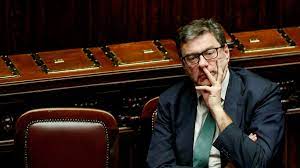Italy: Finance minister evokes default risk to defend bank measures

Rome: Italian Economy Minister Giancarlo Giorgetti evoked the risk of a “default crisis” on Tuesday to justify allowing banks to boost their reserves instead of paying a contested windfall tax.
The Italian government shook investor confidence in August with a surprise 40% tax on net interest margin (NIM), which Rome revisited in September to give banks the option to strengthen capital by an amount equivalent to two-and-a-half times the tax.
“In two or three years’ time, when I may not be around but there will be a default crisis, perhaps someone will say that our government was not so crazy,” Giorgetti said.
“Some symptoms going in this direction are beginning to materialise as banks have started to tap guarantees provided by the state on loans to companies for a few billion euros,” he added.
Higher reserves help banks to more easily absorb losses stemming from potential defaults by borrowers and Italy’s main lenders have put away at least 4.5 billion euros ($4.8 billion) since the introduction of the opt-out option in the windfall tax.
“(The) measure serves to give solidity to the Italian banking system which will become the most solid in Europe,” Giorgetti said while addressing the Italian parliament on the government’s 2024 budget.
The average default rate for Italian companies rose for the first time in nearly a decade in 2022 to stand at 2.4% in December, compared with a record low of 1.6% in December 2021, credit data company CRIF said last month.
The rate has edged up in the first half of 2023 to 2.5%, CRIF said, forecasting it could get to 3% by the end of 2023.
Italy could revise downwards its 0.8% growth target for this year, Giorgetti said, as the economic outlook is marked by “high uncertainty and shaken by new dramatic geopolitical tensions” following last month’s attack on Israel by militant group Hamas.
The slowdown in growth comes as Italy’s government is trying to phase out the expansionary policies adopted since 2020 in the wake of the COVID-19 pandemic and the energy crisis exacerbated by Russia’s invasion of Ukraine in February 2022.





